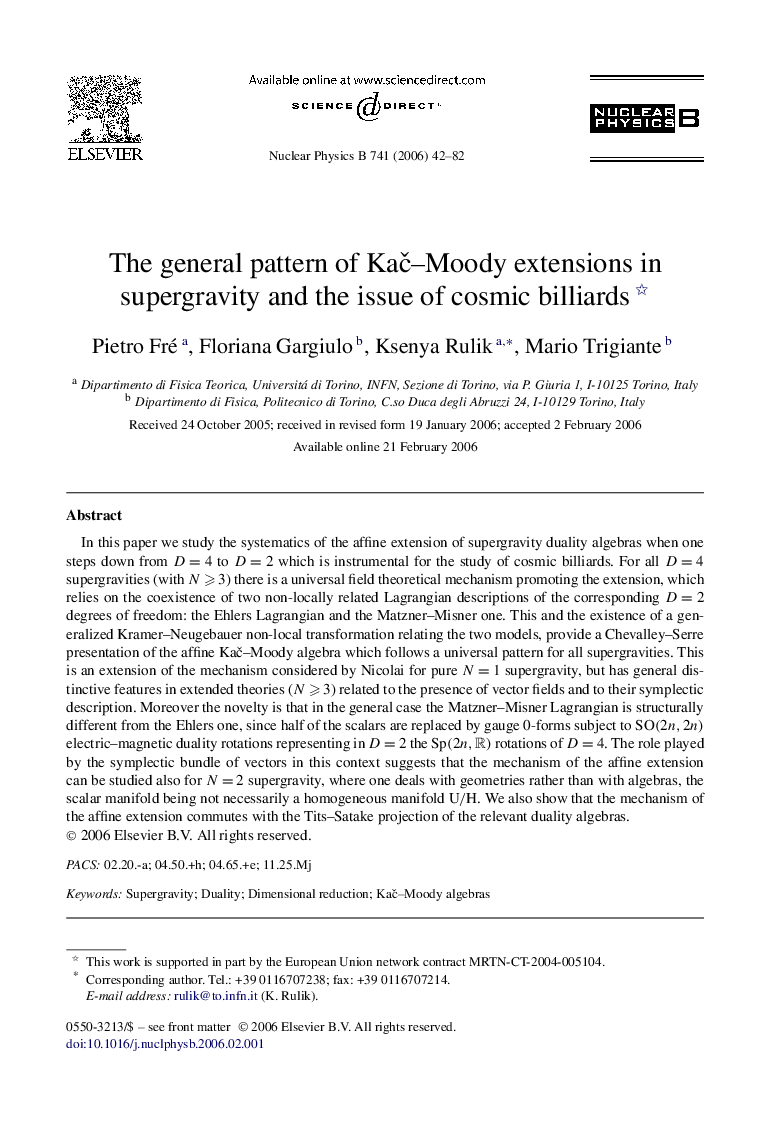| Article ID | Journal | Published Year | Pages | File Type |
|---|---|---|---|---|
| 1844570 | Nuclear Physics B | 2006 | 41 Pages |
Abstract
In this paper we study the systematics of the affine extension of supergravity duality algebras when one steps down from D=4 to D=2 which is instrumental for the study of cosmic billiards. For all D=4 supergravities (with N⩾3) there is a universal field theoretical mechanism promoting the extension, which relies on the coexistence of two non-locally related Lagrangian descriptions of the corresponding D=2 degrees of freedom: the Ehlers Lagrangian and the Matzner-Misner one. This and the existence of a generalized Kramer-Neugebauer non-local transformation relating the two models, provide a Chevalley-Serre presentation of the affine KaÄ-Moody algebra which follows a universal pattern for all supergravities. This is an extension of the mechanism considered by Nicolai for pure N=1 supergravity, but has general distinctive features in extended theories (N⩾3) related to the presence of vector fields and to their symplectic description. Moreover the novelty is that in the general case the Matzner-Misner Lagrangian is structurally different from the Ehlers one, since half of the scalars are replaced by gauge 0-forms subject to SO(2n,2n) electric-magnetic duality rotations representing in D=2 the Sp(2n,R) rotations of D=4. The role played by the symplectic bundle of vectors in this context suggests that the mechanism of the affine extension can be studied also for N=2 supergravity, where one deals with geometries rather than with algebras, the scalar manifold being not necessarily a homogeneous manifold U/H. We also show that the mechanism of the affine extension commutes with the Tits-Satake projection of the relevant duality algebras.
Related Topics
Physical Sciences and Engineering
Mathematics
Mathematical Physics
Authors
Pietro Fré, Floriana Gargiulo, Ksenya Rulik, Mario Trigiante,
